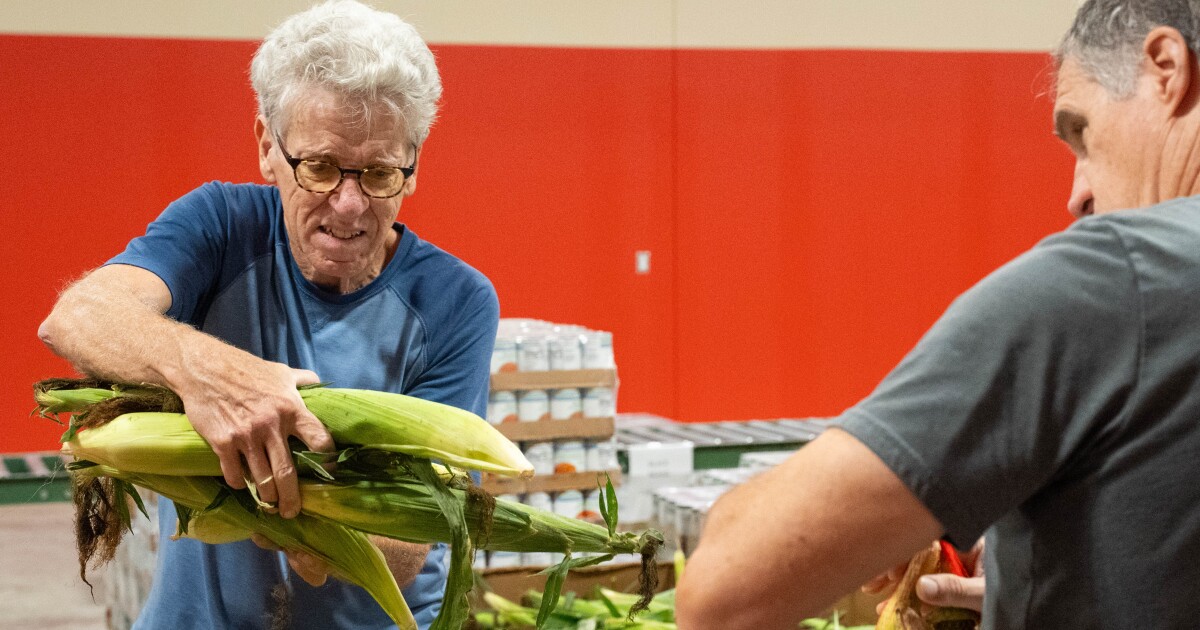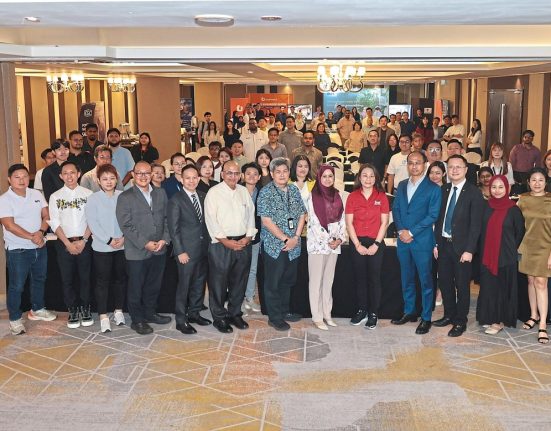On Steve Vossler’s 56th volunteer shift of the year at the Harvesters food bank distribution center in Lawrence, Kansas, he packed corn and cucumbers.
“I like the assembly line aspect of it,” he chuckled.
He was one of a dozen or so volunteers on a July morning cheerfully chatting and packing produce into red mesh bags, ready to stock the shelves at a local food pantry.
Aside from volunteer work, Vossler said, he reads the news. He knew that Congress just approved historic changes to the Supplemental Nutrition Assistance Program, which could cause many more low-income families to rely on food banks like Harvesters.
“I don’t like it and I’m sure there will be some changes,” Vossler said. “But who knows what they’ll be.”
In a major policy shift for SNAP, formerly known as food stamps, individual states will have to shoulder some of the costs to help feed low-income families.
Administrative costs will jump for every state. New work eligibility requirements will shut some recipients out, while creating more work for state agencies that run the program. And states will face steep penalties if they don’t run SNAP to a certain degree of precision.
Supporters of those measures don’t see them as “cuts,” so much as policies that force states to run SNAP more responsibly. Critics, like the progressive Center on Budget and Policy Priorities, say the changes could cause millions of low-income people to lose some or all of their food assistance.
Either way, individual states must figure out how to fill significant budget holes when the policies take effect in 2028. Those decisions will affect how many of Kansas’ 180,000 SNAP recipients are able to rely on federal food assistance to get by.
Zane Irwin
/
Kansas News Service
How will SNAP change?
Faced with steep cost-sharing expectations, some states are feeling the same kind of financial panic as families who may see their food benefits dwindle.
SNAP costs for the state of Kansas will rise against the backdrop of an uncertain fiscal future. While the state recently took in far more tax revenues than expected, it is still slated to spend more money each year than it raises — leaving an estimated $731 million shortfall by 2029.
Kansas Democratic Gov. Laura Kelly said changes to SNAP in President Trump’s recent tax and spending package — known as the One Big Beautiful Bill — could mean more than $50 million in extra costs.
Part of that comes from the boring stuff: administrative expenses. It costs money to hire SNAP case workers, train them and invest in technology to make sure the program is running as it should.
Now, states will pay 75% of those costs rather than half — raising Kansas’ obligation by $15 million.
Zane Irwin
/
Kansas News Service
The bill also expands the range of people who must work or attend training programs for at least 80 hours per month to receive benefits.
Before, certain able-bodied adults without dependents, or ABAWDs, were exempt. Now, people in that category who are aged 55 to 64, parents with children aged 14 or older, veterans, former foster children and people experiencing homelessness must prove they meet new requirements — or lose access to food assistance.
According to the U.S. Department of Agriculture, which oversees SNAP, over two-thirds of recipients are children, elderly or disabled.
Some analyses suggest stricter work requirements do not lead to increased work or earnings. Rather, such restrictions often keep eligible individuals from starting or remaining on food assistance, according to the center-left Brookings Institute.
Work requirements do, however, create more work for state agencies. Kelly estimates Kansas will have to hire and train 40 new employees to keep up with new reporting requirements.
Margin for error
Of all the changes to SNAP, the most difficult to plan for involves payment error rates.
States sometimes overpay or underpay SNAP recipients. That’s usually due to incorrect applications or administrative mistakes.
Payment error rates surged throughout the country during the COVID-19 pandemic, topping 12% in Kansas and reaching as high as 60% in Alaska.
The problem has since eased. The 2024 error rate in Kansas dropped under 10%, below the national average. But many state and federal officials remain dissatisfied, and Congress used its latest budget bill to penalize payment inaccuracies.
Screenshot of legislative hearing
Now, states with error rates above 6% must pay anywhere from 5% to 15% of the cost of SNAP benefits themselves, on top of regular administrative expenses.
If Kansas keeps its current error rate when the penalty takes effect in 2028, it will need to pay an extra $41 million per year to operate SNAP at the same level. That would bring the total increased cost to $56 million — a total that could vary widely based on the error rate.
“It is part of the state having skin in the game,” said Republican Ty Masterson, president of the Kansas Senate.
He said the panic over added SNAP costs for states is overwrought, and that the Kansas Legislature can easily account for added costs — so long as the state gets its payment error rate down.
Kelly said Kansas has until October 2026 to reduce errors and avoid penalties.
“We are all hands on deck out there right now,” she said. “Hiring, training our folks, working on our technology systems, our computer systems, programming, to bring that down.
“Because if we don’t, it’ll just cost us so much more,” she said.
Fewer options on the table
Stephen Davis, who is president and CEO of the food bank Harvesters, said his family relied on food assistance when he was young.
“We struggled the way that many other families struggle on a daily basis,” he said. “So I know firsthand what it means to be food insecure.”
Zane Irwin
/
Kansas News Service
Harvesters defines food insecurity as “a lack of consistent access to enough food for every person in a household to live an active, healthy life.”
In the 17 counties that Harvesters serves in Kansas, Davis said 375,000 people, or 1 in 7 individuals, are food insecure.
Davis is concerned cuts to SNAP will make the state’s hunger problem more severe. Even if Kansas finds the funds to continue operating as before, he worries that work requirements will strip people of their benefits.
There’s only so much his organization can do to help. For every meal Harvesters provides, Davis said, SNAP provides nine.
At the same time, the Trump administration has scaled back federal assistance for food banks, in one recent instance canceling dozens of truckloads of expected food shipments for Harvesters.
Davis said all of those policies combined will result in more people going hungry.
“Those families that lose their SNAP benefits … will likely try to turn to the charitable food system,” he said. “And we already don’t have the capacity to meet the current need.”
Zane Irwin reports on politics, campaigns and elections for the Kansas News Service. You can email him at zaneirwin@kcur.org.
The Kansas News Service is a collaboration of KCUR, Kansas Public Radio, KMUW and High Plains Public Radio focused on health, the social determinants of health and their connection to public policy.
Kansas News Service stories and photos may be republished by news media at no cost with proper attribution and a link to ksnewsservice.org.







